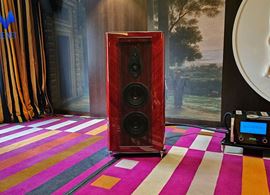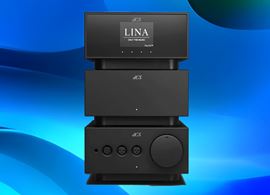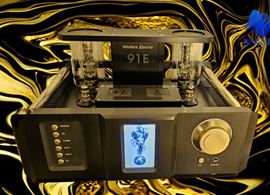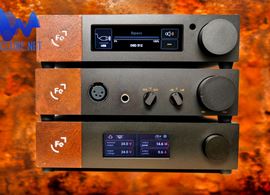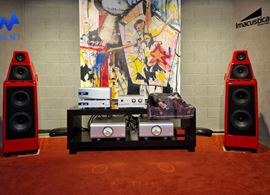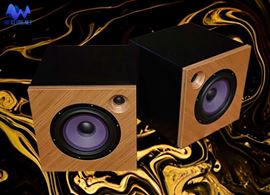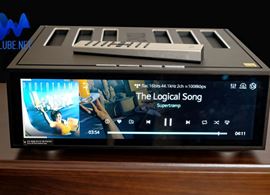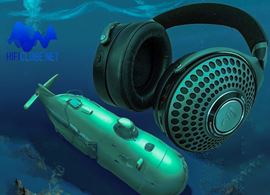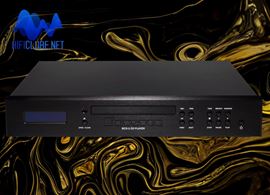Monitor Audio nominated the Studio 89 as the successor to the Studio 15 from 1989, the first monitors with a black lacquered cabinet and gold-plated drivers — hence the name.
I remember the Studio 15 well, but the similarities stop there. When I unpacked the Studio 89s, they immediately reminded me of the original Studio, almost like twin sisters. The most noticeable difference is the colour of the 'eyes' — the bass-midrange drivers, which have been changed from silver to gold.

These are the Studio 15 that allegedly inspired the Studio 89.
Thus, Studio 89 should not be confused with Studio 15 as they only share the black dress and the gold earrings. Studio 89 is a direct descendant of Studio, a mini monitor that received mild positive critical acclaim back in 2018.
In 1986, at the Penta Show in London, Mo Iqbal, the founding father of Monitor Audio, showed me the first metal cones developed for the Studio 60 mid-bass drivers. They were made from an aluminium-magnesium alloy with a thin ceramic coating to dampen the vibrations and kill the 'bell' effect that afflicted competing models.
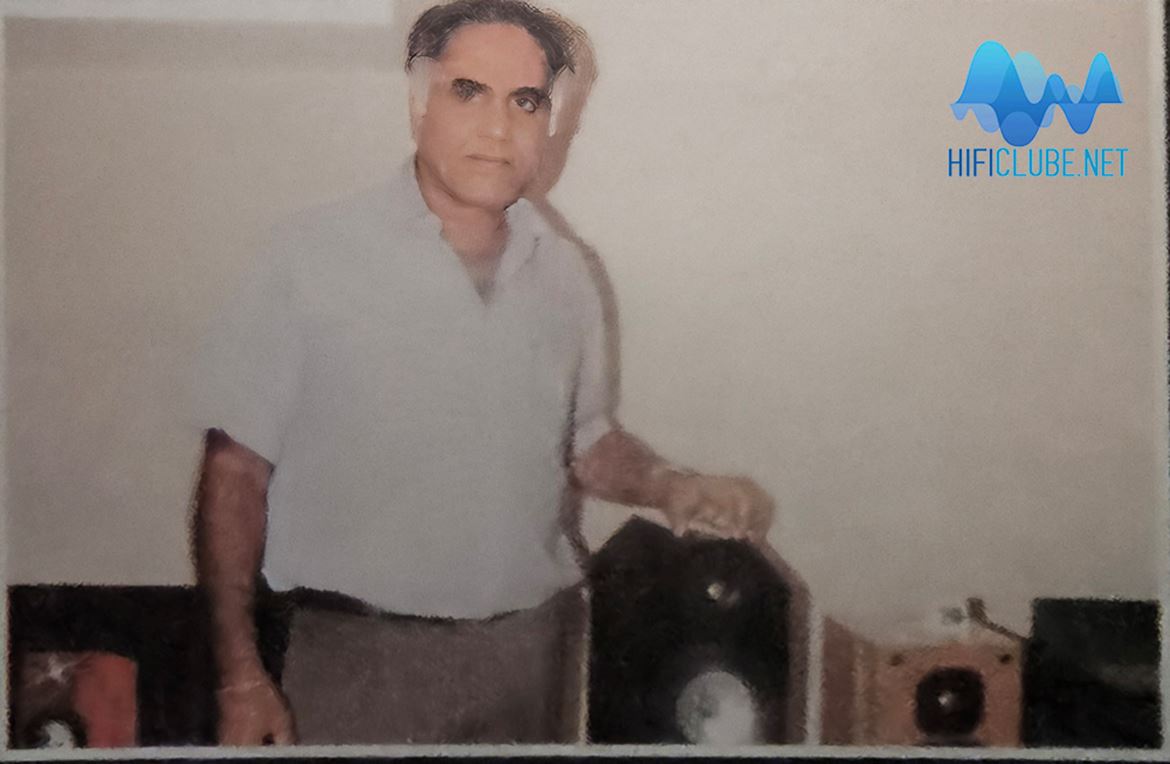
London, 1986. Mo Iqbal introduced the Studio 60 with all metal drivers.
Mo demonstrated the effectiveness of his solution by dropping the cones with and without a ceramic coating onto a hard surface. The uncoated cones had a 'tinny' sound on contact with the stone. In contrast, the coated cones had a 'muffled' sound, similar to cones made of carbon fibre and treated paper. According to Mo, this indicated that the coated cones would hopefully produce a less "metallic" sound when reproducing music.
Fire that burns unseen
Mo then gave me a cone, which I sent to IST to analyse its composition. The analysis revealed an aluminium substrate with impurities, silicon dioxide from the ceramic coating, manganese (a surprising addition) and magnesium — a light, silvery metal that can ignite in the air with an iridescent flame. This prompted me to describe the sound as 'a fire that burns unseen,' perhaps in reference to what Camões (a national poet) wrote about love.
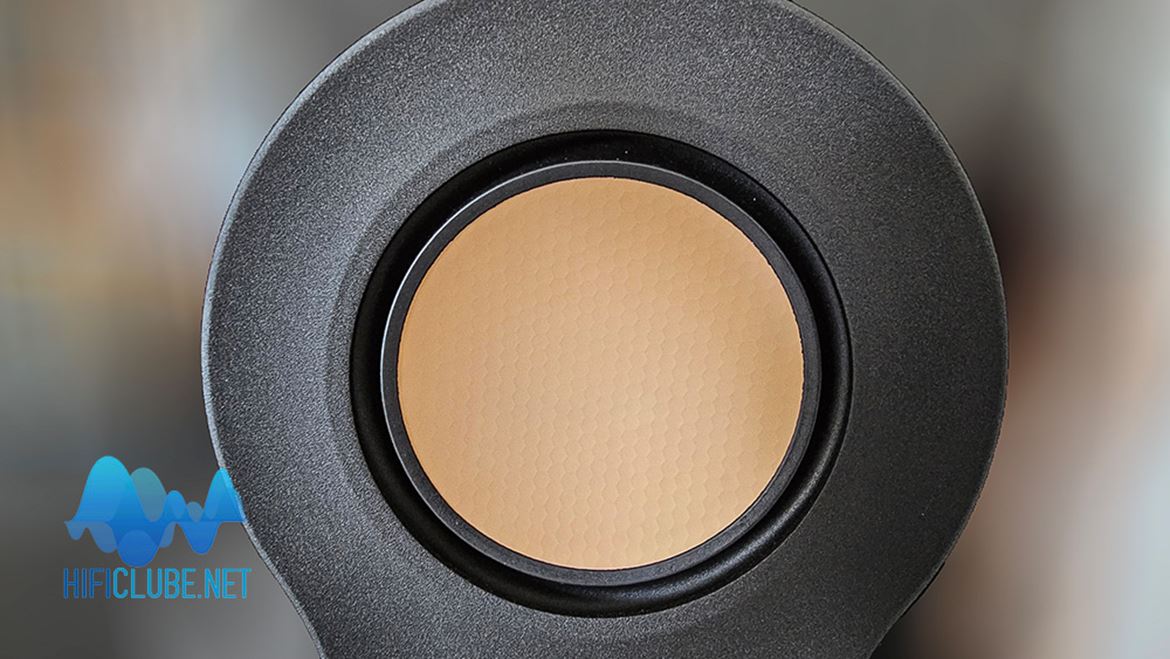
RDT III mid-bass driver, with hexagonal surface pattern.
Monitor Audio's drivers have evolved remarkably. Today, they employ triple-layer metal (aluminium/magnesium) and ceramic (silica) cones reinforced with a Nomex hexagonal honeycomb structure.
Monitor Audio celebrated its 50th anniversary at the High-End 2022 event in Munich by unveiling the Hyphn (formerly known as Concept 50). This innovative product has influenced subsequent loudspeaker models by introducing technologies such as the new AMT tweeter and CCT midrange Gen III. The award-winning 6G series, which was most recently recognized by EISA, and the Studio 89 are two examples of the more recent models that benefit from these innovations.
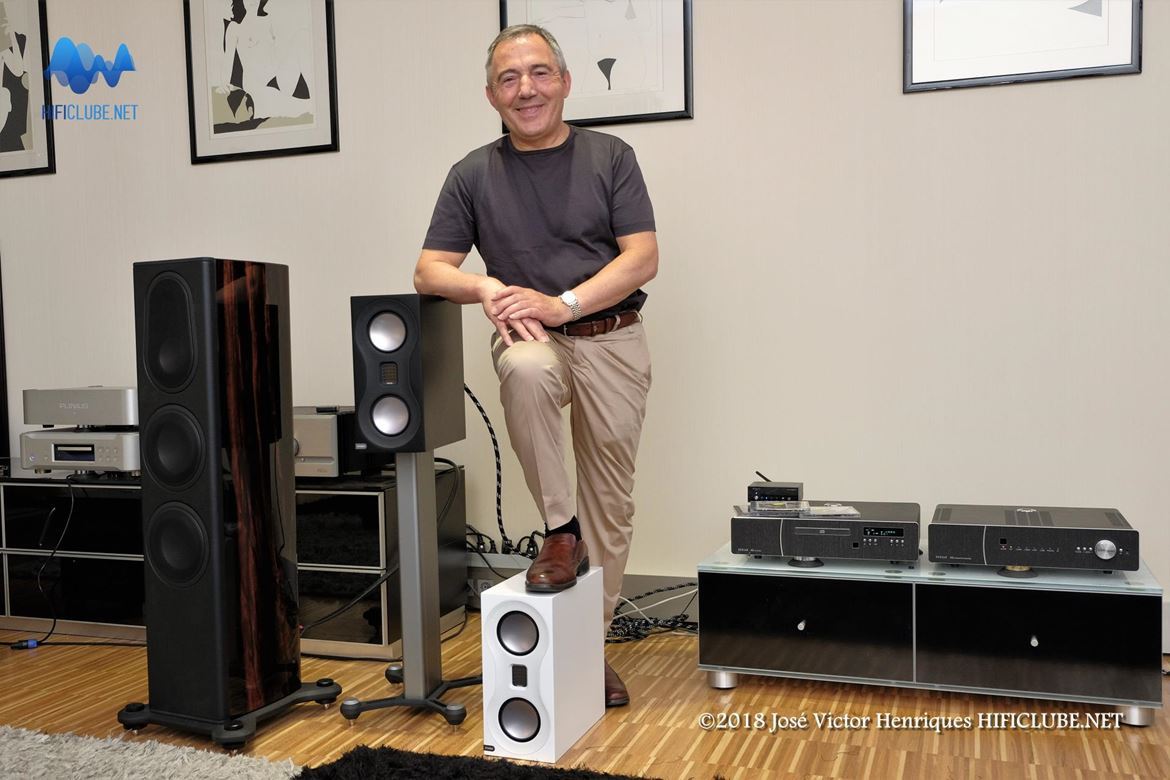
Delfin Yanez demonstrating the Studio back in 2018.
The Wizard of Oz
In 2018, I published a review of the original Studio on Hificlube entitled 'The Wizard of Oz'. In it, I revealed the secret of Delfin Yanez's 'alchemical transformation'. This, at no cost to the customer and without loss of warranty, could elevate the Studio's sound to such a level that no one would go back after hearing it.
Note: This article created quite a stir on the web because I published a photo of Delfin Yanez with his foot on one of the speakers, which garnered a lot of criticism from the readers. As if he were abusing a family pet.
When he sent me the new 89s for review, Delfin confessed: 'I am done with that!', perhaps because the 89 doesn't need the'magic touch', which consisted of replacing the crossover inductors with Mundorf equivalents, since they already use better quality components: low-loss air core inductors and fast-response polypropylene and polyester capacitors.
In 2019, I listened to the Studio again at Delaudio's new premises in Lisbon (video above).
The original Studio used a pair of 108 mm RDT II mid-bass units and an MDP II (Micro Pleated Diaphragm) tweeter, one of the many variants of the Air Motion Transformer developed by Dr Oskar Heil. I still had the pleasure of meeting him in person before his demise in 1994.
This technology continues to evolve, and since the patent fell into the public domain, many manufacturers have widely used it. The 89 uses the latest generation III of these units, also mounted in a narrow aluminium baffle, decoupled from the enclosure using high-density foam, in an 'MTM' configuration (Midwoofer-Tweeter-Midwoofer). The remarkable Platinum 500's central core was where the brand first used this D'Appolito variant.
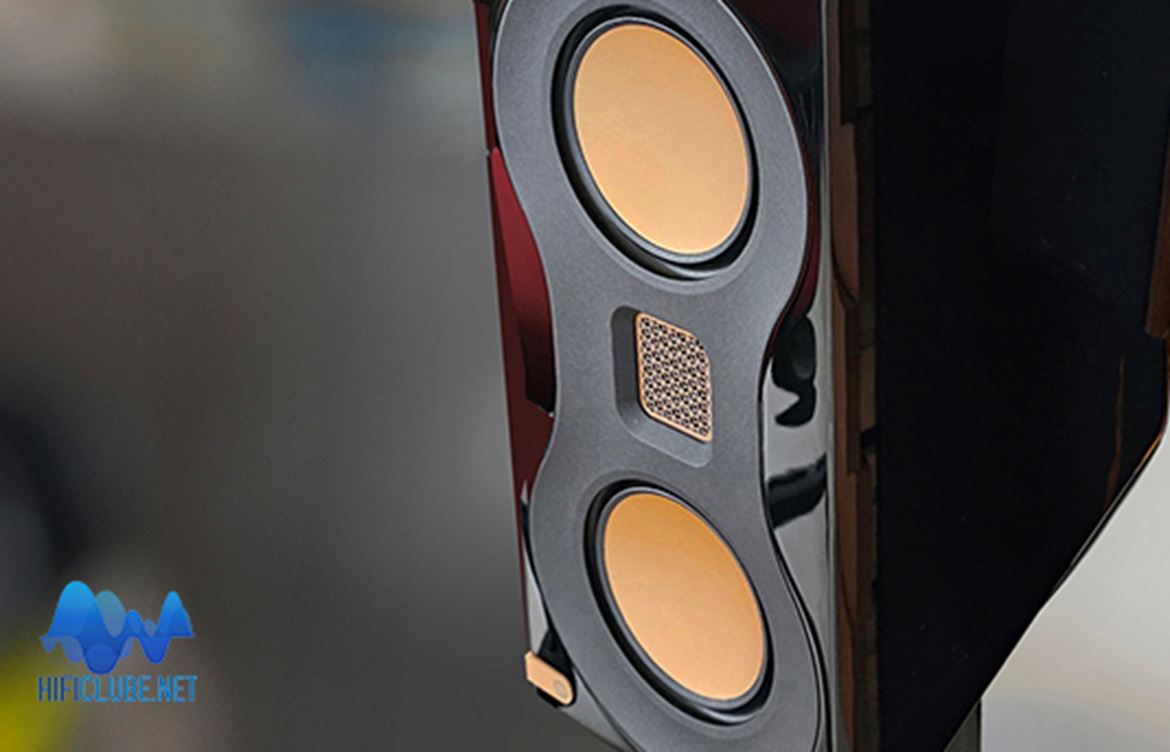
'MTM' configuration (Midwoofer-Tweeter-Midwoofer).
Point source
This setup is designed to achieve a more even sound distribution and enhance sound dispersion in a vertical direction while maintaining a coherent soundstage. Thus, it embodies Hyphn's 'Transparent Design' philosophy.
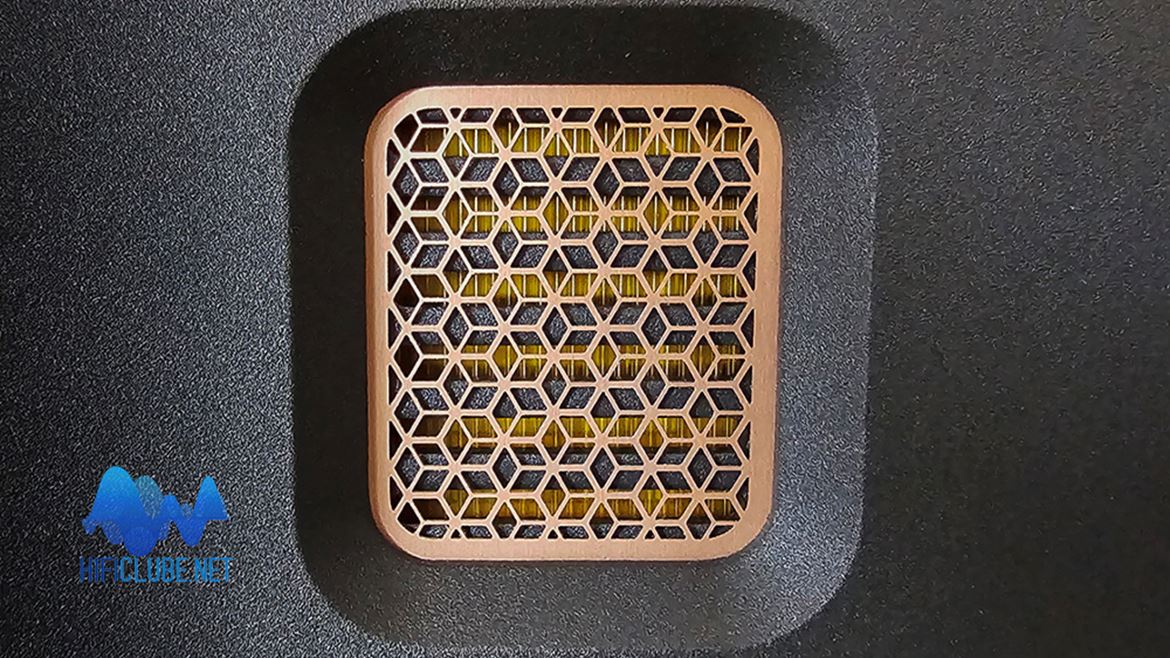
The new MPD III tweeter is positioned in a waveguide to ensure nearly equal horizontal and vertical sound radiation.
The new MPD III tweeter is positioned in a waveguide to ensure nearly equal horizontal and vertical sound radiation, minimising the impact of standing or off-axis listening on the overall tone.
The box measures 340x157x361 mm and weighs approximately 8 kg, the exact dimensions and weight of the original Studio. And it looks stunning on the outside (and inside) with its high-gloss piano black lacquered finish. There are no visible screws, except at the back, for the adjustment screws of the rods that attach the mid-bass speakers internally to the rear panel. The cable terminals are also of excellent quality and plated with rhodium.
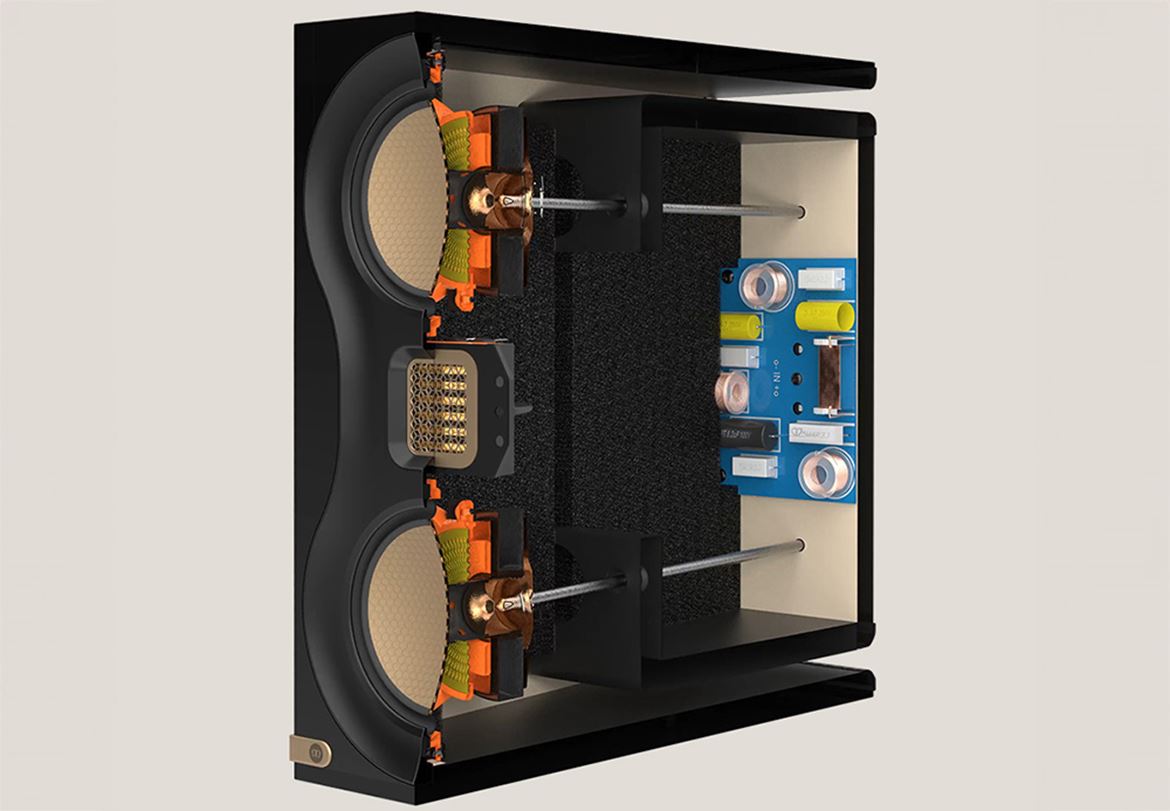
The cabinet has structural reinforcement (bracing) reminiscent of a transmission line.
Internal bracing
Inside, the cabinet has structural reinforcement (bracing) reminiscent of a transmission line. However, this is a double reflex system, with slot openings at the top and bottom, to control the standing waves inside the cabinet and eliminate turbulence at the mouth of the port.
The Studio 89 are sold with its bespoke stands, which place them at the ideal listening height and allow the speakers to be fixed with security screws, as well as being perfectly level. They will set you back another €600, plus the €2,350 for the speakers (+€1,000 more than the Studio).
Of course, you can put them on a shelf, but you should leave them about 30 cm away from the wall so the bass can breathe.
Studio vs. Studio 89
And now, for the million-euro question: Does the price of Studio 89 justify the thousand-euro difference from the original Studio? The finish is luxurious and refined—that's obvious. But what about the sound?
I don't have the Studio here to compare, so I'll have to rely on what I wrote about it in 2018:
'Out of the box, the Studio is fast and cohesive, with a tight, rhythmic bass, reasonable harmonic structure and low distortion. They don't displace much air, but that's to be expected from such a compact speaker.
However, a certain lack of body in the mid-range leaves the tweeter without proper tonal support, and the image lacks consistency and becomes vague. But, after being 'tuned' by Delfim Yanez, they gain body, focus, solidity and overall cohesion, beating speakers twice their price without an increase in… cost!'
The Studio 89 was born perfect and it has more body.
This is where Studio 89 differs from Studio: they were born perfect and have more body! They can handle more continuous power (150 W) with a maximum sound pressure of 113 dB. The cut-off frequency has been lowered from 2.7kHz to 2.4kHz, which is noticeable in voice reproduction.
With a nominal impedance of 4 ohms and a sensitivity of just 86 dB, the Studio 89 speakers still require a powerful amplifier to deliver their best performance. I recommend pairing them with transistors, high-power Class D amplifiers, or the Advance Paris hybrids, also available through Delaudio. I tested them with a Rose Hifi RS520, which provided enough power to bring the Studio 89 to life. However, I noticed they have a 'comfort zone' when it comes to volume—so it's best not to push them too hard.
The Studio 89 represents the ultimate, affordable expression of a compact solid and coherent sound.
Compact sound
The Studio 89 represents the ultimate, affordable expression of a compact solid and coherent sound.
It takes advantage of the proximity and configuration of the drivers (point source) and the narrow baffle, which reduces diffraction effects and promotes the stability and specificity of the stereo image.
With just over 12 litres of internal volume, don't expect much bass extension, here compensated for by articulation and leading-edge detail. I measured -6 dB/58 Hz in my living room relative to 200 Hz. However, the reflex system's coupling with the room yielded surprising results.
Differently better
For example, in Anete Askvik's 'Differently', the pulsating synthesiser made the windows rattle without the bass interfering with the purity of her voice.
In 'Thanks to You' by Boz Scaggs, the synthesiser bass reached lower depths than I had imagined without affecting Boz's natural vocal timbre.
And in 'Et Misericordia', from Kim André Arnesen's Magnificat, I could hear the organ pedals resonating in Nidaros Cathedral. However, the ethereal soprano Lise Berg's voice and the heartfelt religiosity of the young girls' choir were unaffected, highlighted by the melancholy strings of the Trondheim Soloists. A reproduction capable of converting even an atheist to audiophilia.
I admit, it's not the same as listening to a full-range speaker. Adding a subwoofer is advisable in certain more festive circumstances (Delaudio offers a wide range of subs).
If you have limited space, a tight budget, challenging neighbours, and a spouse with solid opinions on decor (and music!), Studio 89 is an excellent choice. It offers high-quality sound in a beautiful, compact, and affordable design.
Dear Mo, your legacy is in good hands!





